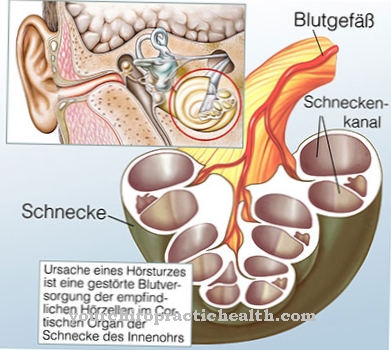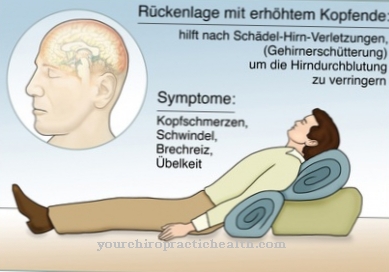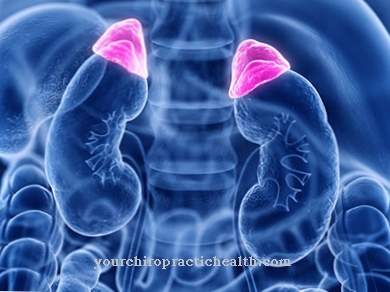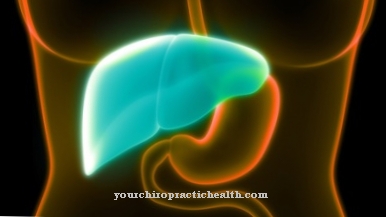As spinal shock a condition is defined that occurs after a spinal cord lesion with partial or complete severing of the nerve tracts in the parts of the body below the lesion site, so that external and internal reflexes are completely eliminated. The skeletal muscles and the visceromotor vegetative muscles are subject to spinal shock and are completely paralyzed. The duration of the spinal shock ranges from a few hours to several months, with a mean of four to six weeks.
What is spinal shock?

© designua - stock.adobe.com
A spinal shock, which occurs after a spinal cord lesion, is characterized by a complete nervous blockade of certain areas of the body. It is the body regions whose nervous supply is directly affected by the lesion of the spinal cord. The spinal shock not only paralyzes the voluntary skeletal muscles but also the involuntary visceromotor muscles.
In addition, sensory perceptions and the vegetative control loops of the basic functions such as thermoregulation and the like are disabled. All affected muscles lose their basic tone, their basic tension. The spinal shock differs significantly from the paraplegia that may later appear.
In the case of a spinal shock - regardless of existing nerve connections or possibly still intact control circuits and sensors - the entire nervous voluntary and involuntary network including the sympathetic and parasympathetic nervous system is completely blocked. The impression arises that the spinal shock corresponds to a protective mechanism.
This may prevent incorrect reactions or incorrectly reacting control loops from forming. The temporary total shutdown enables the blockage to be gradually released again later, which corresponds to a gradual and experimental reconnection of certain groups of nerves.
causes
Physiologically, a spinal shock is triggered by the massive leakage of potassium ions from the cells into the intercellular space. The reasons that this mechanism is set in motion are usually a lesion of the spinal cord caused by an accident. A spinal shock can set in when the spinal cord is completely or partially severed, so that nerve lines are cut.
A sudden compression of the spinal cord can also trigger a spinal shock, although all nerve connections are still mechanically intact - as can later be found out. Accidents that have to do with external influences are not the only cause of spinal shock. Tissue growths within the spinal canal or at the point of entry and exit of the nerves can lead to a displacement and ultimately to a squeezing of the nerves with loss of function and possibly trigger a spinal shock.
Similar symptoms can arise in the event of a sudden and massive herniated disc. Another triggering problem can arise with the otherwise gentle epidural or spinal anesthesia. In rare cases, a sudden drop in blood pressure occurs, which is probably due to the induction of a spinal shock.
Symptoms, ailments & signs
Spinal shock is associated with serious symptoms and discomfort, which usually require treatment and care in a shock room or in the intensive care unit. The symptoms and signs described below always relate to areas of the body below the level at which the spinal cord lesion took place.
First of all, a complete paralysis with a noticeably flaccid tone can be seen in all affected muscle parts. Because of the lack of sympathetic stimuli, the blood pressure drops sharply and the heart rate is usually slowed down. An involuntary and uncontrollable leakage of urine and stool is symptomatic.
The temperature and sweat regulation are disturbed. In the short term, the skin feels warm and well supplied with blood because the peripheral vessels dilate due to the lack of sympathetic stimuli, which can lead to rapid heat loss at low outside temperatures.
Diagnosis & course of disease
In most cases, a spinal shock occurs as a result of an accident, so that the initial diagnosis can be carried out at the scene of the accident with possibly inadequate aids. A reliable diagnosis of whether a spinal shock is present can only be made after initial treatment and admission to the shock room or intensive care unit.
The course of the spinal shock depends very much on the severity and location of the spinal cord lesion, on the first aid and on the constitution of the injured person. In the case of minor injuries or a spinal cord sprain, the spinal shock can be released after a few hours, so that normal body functions are restored.
In the case of more serious injuries with subsequent paraplegia, a spinal shock can in extreme cases last for up to several months. On average, the shock resolves after a few weeks.
Complications
This condition is a very serious complaint. In most cases, treatment cannot be carried out if the nerve pathways have already been completely severed. Those affected primarily suffer from severe paralysis.
As a rule, they occur directly below the affected level and can make everyday life much more difficult for the patient. This leads to restricted mobility, so that most of those affected are dependent on a walking aid or a wheelchair.The shock also causes blood pressure to drop and the heart rate to drop so that those affected can lose consciousness.
Furthermore, stimuli or reflexes are also lost. In many cases, those affected also suffer from psychological complaints or from depression due to the loss of movement. Since the paralysis cannot usually be treated directly, only the remaining symptoms are treated. There are no particular complications.
However, those affected are also dependent on psychological treatment. Furthermore, no general statement can be made about life expectancy. As a rule, the further course of the disease also depends heavily on the cause of this shock.
When should you go to the doctor?
In the event of such a shock, a doctor must always be consulted immediately. Only by treating this complaint quickly and directly can further complications be prevented. In the worst case, the nerve tracts are completely severed, so that the patient is then completely paraplegic.
The doctor should then be contacted if there is severe paralysis of the muscles in various parts of the body. These paralyzes mostly affect the body regions below the hips, so that the person affected can no longer move their legs. The muscles relax and can no longer be moved. In many cases, a strong or even an uncontrolled urge to urinate can also indicate this shock. Furthermore, some of those affected also show uncontrolled sweat production. If these complaints occur, the doctor to be treated in the hospital must be contacted immediately.
Treatment & Therapy
Treatment of spinal shock is initially limited to emergency care, taking into account the other injuries, especially the spinal cord injuries. Initial or emergency care aims to maintain or regain vital functions such as breathing and circulation. In addition, heat regulation plays a major role.
It must be ensured that the heat loss is minimized by a special blanket or even heat is supplied in order to keep the body temperature in an acceptable range above 35 degrees Celsius. Further treatment is usually based on the injuries diagnosed. There is no known direct drug or other therapy to rapidly dissolve the spinal shock.
prevention
Direct preventive measures to avoid spinal shock do not exist. Indirect preventive protection consists in avoiding high-risk sports and other situations with a risk of injury to the spine. Regular light sport with back exercises largely prevents problems with the intervertebral discs. Nevertheless, there remain residual risks that cannot be completely avoided and can be assigned to the general life risk.
Aftercare
The spinal shock is caused by force acting on the spine. The characteristic symptoms include paralysis, immobility, shortness of breath and restricted activity of the internal organs. This condition must be taken seriously in any case. It requires immediate medical care. Follow-up care is necessary to avoid permanent damage.
Most of the time, the spinal cord is damaged by an accident. Spinal shock occurs about an hour after the injury. It lasts from a few days to six weeks. Only after this period can the severity of the paraplegia be determined. Until then, the patient will receive medical care in the hospital. Follow-up care begins during the stay in the clinic.
Consequential damage can be combated more specifically with early therapy. The muscle reflexes gradually return. If the outcome is favorable, the spinal shock heals without consequences. A slight bruise of the spinal cord does not have any long-term consequences. The patient is discharged from the clinic. He should still have regular checkups by a neurologist.
In severe cases, permanent damage to the spine remains. Follow-up care lasts a lifetime for paraplegics. The person affected learns how to deal with the paralysis appropriately. There is no generally applicable treatment. It is different for each patient. The orthopedist adjusts them individually.
You can do that yourself
In the case of a spinal shock, the possibilities for self-help are very limited. The primary aim is to strengthen the psyche and optimize the inner attitude towards dealing with the disease. The self-help approaches are very limited, as there are no treatment methods outside of medical care that enable an improvement in the state of health. Mental support is therefore particularly important.
Regular exercises to support the skeletal system and muscular system can be carried out as a preventive measure. Therapeutic exercises for stabilization and a timely reaction to strong physical strain are particularly helpful. Conditions of overexertion should therefore be avoided.
However, once the disease has been diagnosed, the person concerned has little control over their own body. The paralysis and loss of movement prevent him from engaging in sufficient activity. If the muscles can be moved in some areas of the body, they should be trained regularly. Learned training units can also be carried out independently outside of therapy.
It is important to have a positive attitude towards life and the belief that improvements are possible despite all adversities. The state of shock is an emergency situation. Trust in the treating doctor is particularly important during this time. You should work with them as closely as possible.


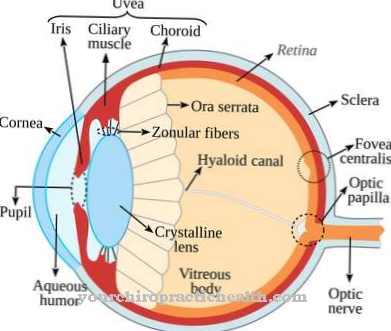

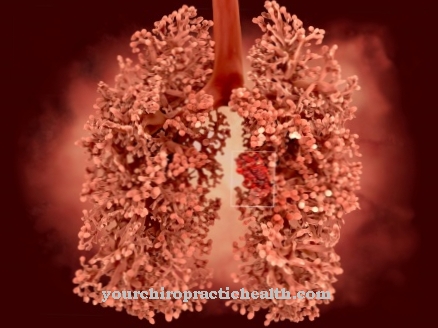
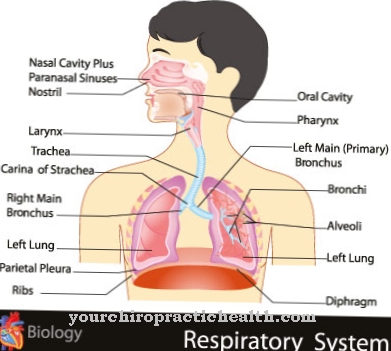




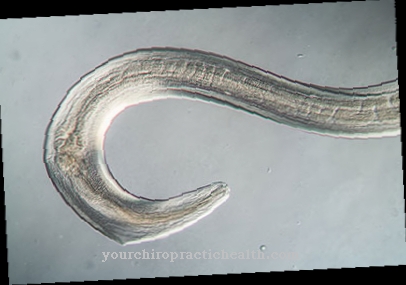


.jpg)







